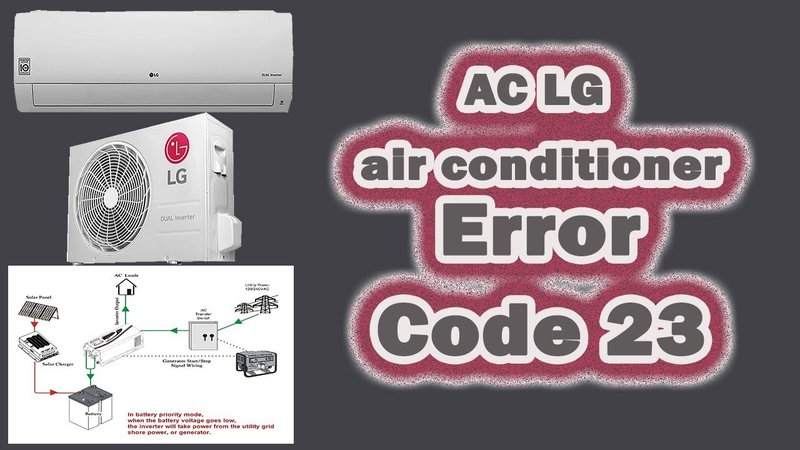
You might be wondering why this matters. Well, efficient drainage is crucial for your air conditioner’s overall health and cooling efficiency. Think of it like a car engine needing oil; without it, things can grind to a halt. So, let’s dive into how you can prevent this pesky OE error from taking the spotlight when all you want is a refreshing breeze.
Understanding the OE Error Code
The OE error code is essentially your LG air conditioner’s way of alerting you to a problem in its drainage system. Picture this: your air conditioner is pulling moisture from the air, and just like a sponge, it gets saturated if there’s no way for the water to escape. The error code pops up when there’s a blockage or issue in water discharge.
Here’s the deal: air conditioners dehumidify air as they cool it. As part of this process, they collect water, which must be channeled away to keep everything running smoothly. If there’s an obstruction—for instance, a kinked drain hose or debris blocking the way—water gets backed up, triggering the OE error. Think of it like water pooling in your kitchen sink when the drain is clogged.
Understanding this is key because if the water isn’t draining right, it can lead to more serious problems. Imagine leaving a wet towel out and forgetting about it—eventually, mold can set in. Similarly, standing water in your air conditioner can lead to mold growth and foul odors, and can even damage internal components. So, tackling this early is crucial.
Regular Maintenance to Avoid OE Errors
Now, onto the million-dollar question: how do you sidestep the OE error code dance? The answer lies in regular maintenance. Think of your air conditioner like a garden—it needs frequent upkeep to thrive. Regular maintenance goes a long way in preventing blockages that lead to the OE error.
First, make it a habit to check the drain hose. It should be free of kinks and blockages. If you’re unsure what that means, imagine a garden hose; even a small kink can disrupt water flow. Similarly, ensure the hose is properly connected and isn’t sagging, allowing water to pool and back up.
Next, consider the air filters. Yes, they play a role too! Clean filters mean better air circulation and less moisture buildup, reducing the chance of drainage issues. Just like you’d clear out your vacuum’s filter to keep it working efficiently, clearing air conditioner filters is equally as important.
Finally, think about scheduling routine professional check-ups. Professionals can spot potential problems that might be hidden from a casual glance. It’s like getting your car serviced to catch issues before they become costly repairs. Investing in a little proactive maintenance can save you a lot of hassle—and money—down the road.
Dealing with Drainage Issues
Let’s say you notice some signs that your air conditioner isn’t draining properly. Maybe there’s a puddle forming around it or an unpleasant smell wafting through your home. These are red flags that you should pay attention to. Acting quickly can prevent minor issues from turning into major headaches.
First, inspect the drain hose. Is it clogged with dirt or debris? Consider using a long, flexible brush to clear out any buildup, much like you’d use a plumbing snake for a clogged drain at home. If the hose is damaged, replacing it might be necessary to restore proper drainage.
Don’t forget to check the drain pan. This is the catch-all tray where water collects before exiting through the hose. If it’s full, either empty it manually or figure out why it’s not draining. Sometimes cleaning it out is all it takes, much like emptying a gutter to prevent overflow.
If these steps feel overwhelming or if the problem persists, it might be time to call in a professional. They can provide a thorough inspection and have the tools to tackle more complex issues. Remember, just like calling a mechanic for a persistent car noise, there’s no shame in getting expert help to ensure everything’s running smoothly.
Practical Tips to Prevent Future OE Errors
To truly prevent future OE errors, adopting some proactive habits can be a game-changer. Think of these tips as your secret weapon against unforeseen issues. With just a bit of effort, you can keep your air conditioner humming along all summer long.
One effective tip is to ensure your unit is installed correctly. A slightly tilted unit can sometimes cause water to pool instead of draining properly. Imagine tilting a bottle of soda just right so it doesn’t spill but pours smoothly. The right angle ensures efficient drainage, minimizing the risk of an OE error.
Another tip is to maintain a clean and clear area around your air conditioner. Keep it free of leaves, dirt, and debris, just like you’d keep your lawn tidy. A clean environment prevents outside elements from interfering with the drainage process.
Lastly, stay vigilant. Keep an eye out for any unusual performance issues, smells, or water leakage. Early detection of drainage problems can save you from dealing with a bigger disaster later on. Think of it as spotting a red light before it turns green—it’s your cue to take action before something more serious occurs.
In conclusion, safeguarding against the OE error in your LG air conditioner is all about regular maintenance and attention. By keeping these tips in mind, you can enjoy a cool, comfortable home without the stress of unexpected errors.